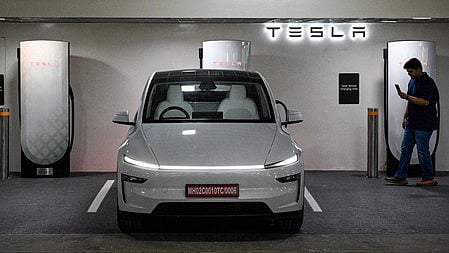The Economic Survey has noted that a distinguishing feature of India's economic response has been an emphasis on supply-side reforms rather than a total reliance on demand management.
These supply-side reforms include deregulation of numerous sectors, simplification of processes, removal of legacy issues like 'retrospective tax', privatisation, production-linked incentives.
Experts weigh in
Ramesh Nair, CEO, India & Managing Director, Market Development, Asia, Colliers
The 2022 Economic Survey infuses optimism for what lies ahead. The projection of 8-8.5 percent GDP growth for fiscal 2022-23 will be led by supply-side reforms and easing of regulations. The survey also indicates that consumption is growing and inching closer to the pre-pandemic levels. Total consumption is estimated to have grown by 7.0 per cent in 2021-22 with a significant boost from government spending. The Survey spells out that rising capital expenditure by the government on infrastructure and an uptick in the housing cycle has been responsible for reviving the construction sector. This has resulted in the consumption and production of steel and cement consumption to reach pre-COVID levels. We expect Budget 2022-2023 to announce reforms and incentives that will continue to boost consumer spending and thus aid in the overall revival of the real estate sector.
Aditi Nayar, Chief Economist, ICRA
The range of 8.0-8.5 percent growth for FY2023 assumed by the Economic Survey appears to have built-in a cushion for any disruption caused by future waves of COVID, in our view, even as preparedness of economic agents has improved amidst the insurance offered by the bouquet of social safety nets. The continued thrust to government capex portended by the Economic Survey is enthusing, as it offers the best likelihood of instigating a durable growth recovery. This is in line with our own view that the upcoming Budget must fully allocate the amount of capital spending that can realistically be absorbed in FY2023.
With the Economic Survey corroborating that spending will be back-ended in FY 2022, we maintain our forecast of a modest fiscal slippage driven by the missed disinvestment target.
Following the conversion/switch of G-sec with the RBI, we now peg the gross dated borrowing of the GoI at Rs. 12.3 trillion in FY2023. Our baseline assumption is that GDP growth will remain steady at 8.9 percent in FY2022 and 9.0 percent in FY2023. With the rebound in commodity prices leading us to revise up our WPI inflation forecast for FY2023 (to 4.0 percent from 2.0 percent), and creating an upside to our projection of a 5.0 percent CPI inflation for FY2023, we now place nominal GDP growth for the coming year at 13.5 percent. The stickiness in the CPI inflation suggests that its only a matter of time before the MPC commences on policy normalisation, with a change in stance to neutral in April 2022.
Ranen Banerjee - Partner and Leader Economic Advisory Services, PwC India
The Economic Survey has highlighted the agile approach to fiscal and monetary management that has been undertaken over the past years and recognizes the risks faced by the Indian economy. Following the agile approach, the GDP is therefore projected to grow at a range of 8-8.5 percent rather than a specific percentage. This projection is possibly at the optimistic end of the spectrum given several underlying assumptions. The projections are based on assumptions that there will be no further debilitating pandemic related disruption,
There will be a normal monsoon, global central banks will undertake an orderly withdrawal of global liquidity, oil prices will moderate to a range of USD 70-75/bbl during FY23 and global supply chains will ease gradually. It is quite likely that some of these assumptions may not hold and there could be other risks emerging from rising geopolitical tensions (that have not been stated in the assumptions). Therefore , we should realistically expect sub 8% GDP growth in FY23 and anticipate an agile approach to fiscal management in the Union Budget in the highly VUCA environment. The Finance Minister will be equipped with fiscal ammunition to aim for the projected economic growth rate under the given assumptions.
Dr. D.K. Srivastava, Chief Policy Advisor, EY
Economic Survey’s 2022-23 forecast for real GDP growth in the range of 8-8.5 percent is tangibly below the IMF’s latest projection at 9.0 percent. The main reason for the lower forecast is non-availability of significant base effects in 2022-23 as compared to 2021-22. In fact, when these base effects were absent in Q3 and Q4 of 2021-22 and economic activities had started to normalize, the average growth in the second half of 2021-22 was only 5.6 percent. As such, even a growth of 8-8.5 percent may prove to be optimistic particularly if the underlying assumption regarding global crude prices being in the range of $70-75/bbl. is belied. The higher petroleum prices however translate into relatively higher WPI and IPD-based inflation rates. This is proving to be the main reason for buoyant tax revenue growth. The Survey correctly recognizes that with high tax buoyancy, there would be enough fiscal space to sustain the growth momentum of government’s capital expenditure while meeting the 2021-22 budgeted fiscal deficit of 6.8 percent of GDP. On the fiscal side, the main concern now is to calibrate a reduction path for general government debt-GDP ratio which is estimated to touch 90 percent in 2021-22 in the Survey. This will result into high committed expenditures on account of interest payments relative to revenue receipts, thereby squeezing the fiscal space available for capital expenditures.
With pressure on inflation particularly on WPI inflation, nominal growth prospects in 2022-23 could be in the range of 14-14.5 percent. This might translate into a growth of centre’s gross tax revenues of nearly 17 percent. The Union Budget for 2022-23 may thus be able to reduce fiscal deficit to 6 percent or marginally below it while also marginally reducing the share of revenue deficit in fiscal deficit.
Dr. Anand B. Assistant Professor, NMIMS Sarla Anil Modi School of Economics
After the disastrous ramifications of the Covid-19 pandemic, Economic Survey 2021-22 provides lots of optimism regarding the revival of the Indian Economy. The GDP growth for 2022-23 is expected to touch 8-8.5% as the economic activity rebounds to the pre-pandemic level. Private consumption is likely to witness strong recovery, which will certainly have positive spillover effects on private investments. The survey adds that factors such as widespread vaccine coverage, gains from supply-side reforms and easing of regulations, healthy export growth and more fiscal space for capital expenditure will revive the animal spirits.
Indranil Pan, Chief Economist - Yes Bank
The Economic Survey painted India in an optimistic light with good macro-stability indicators touted as a buffer against the uncertain global environment. The response of the policy makers to COVID-19 has been mostly in the form of supply-side measures rather than a Keynesian demand push. A flexible policy approach has enabled steady the ship and also provide India with a bounce pad to emerge back on a strong footing. A stronger bounce to private investments is envisaged with healthier balance sheets – both for corporates and banks. The survey highlighted that India is well placed to achieve an 8.0-8.5 percent real growth in FY23 even as tackling the imperatives of high global energy prices remains a critical challenge. Given this high real growth, it remains to be seen what nominal growth is assumed for drafting the Budget as this will have an implication on the revenue generation assumptions.








